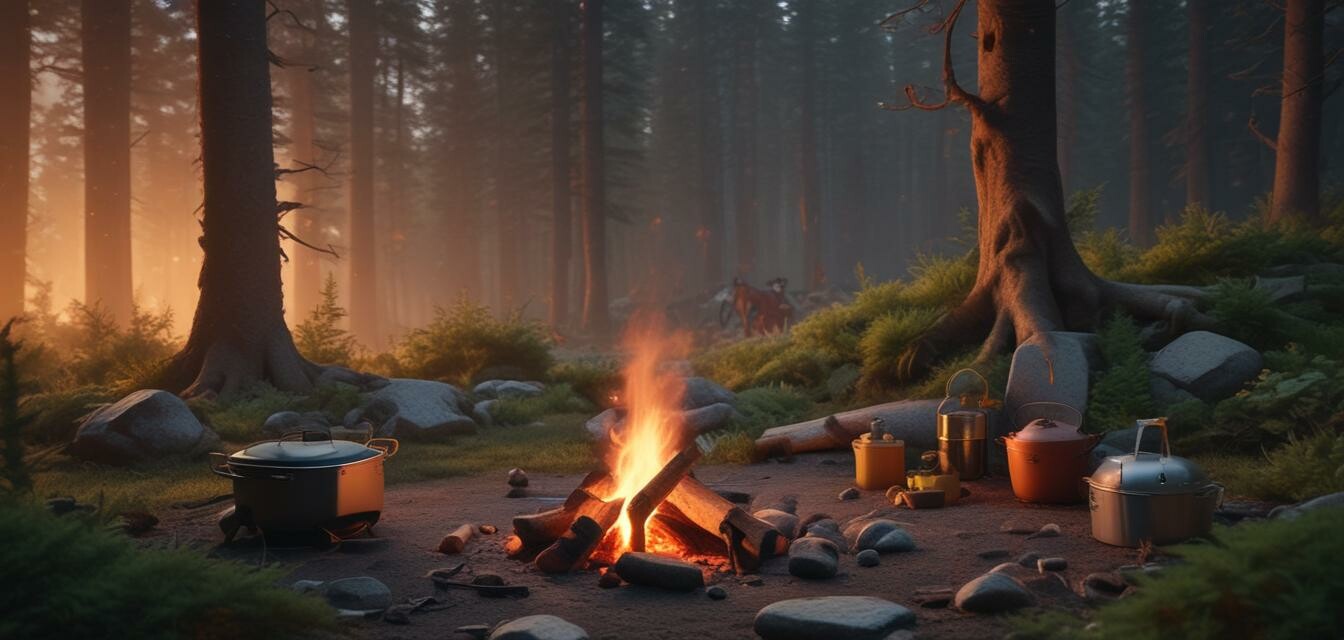
Creating a campfire cooking plan
Key Takeaways
- Planning meals in advance enhances your camping experience.
- Easy-to-cook meals minimize stress at the campsite.
- Proper grocery shopping saves time and money.
- Safety and cleanliness are crucial while cooking outdoors.
Cooking while camping can be a fun and rewarding experience, but it requires a well-thought-out plan. In this article, we’ll guide you through the process of creating an effective campfire cooking plan, including tips for grocery shopping and cooking logistics applicable for beginners.
Step 1: Determine your meals
Before you even hit the grocery store, it’s important to decide what meals you would like to prepare during your camping trip. Consider the following:
- How many days will you be camping?
- How many meals will you need (breakfast, lunch, dinner)?
- Dietary restrictions and preferences of your camping group.
Sample Meal Plan
| Day | Breakfast | Lunch | Dinner |
|---|---|---|---|
| Day 1 | Pancakes | Sandwiches | Grilled Veggies & Chicken |
| Day 2 | Oatmeal | Wraps | Taco Night |
| Day 3 | Fruit & Yogurt | Salads | Hot Dogs & Beans |
Step 2: Create a grocery list
Once you have your meal plan set, creating a shopping list is next. This will help ensure you have everything you need, and it will make the shopping process more efficient. Cover these points:
- Group items by category (produce, dairy, etc.)
- Include small items like spices and condiments.
- Consider packaging for camping convenience (easy-to-carry, less fragile).
Sample Grocery List
| Category | Items |
|---|---|
| Produce | Potatoes, bell peppers, onions, mixed greens |
| Dairy | Cheese, yogurt, milk |
| Proteins | Chicken, hot dogs, canned beans |
| Grains | Bread, tortillas, oatmeal |
Step 3: Packing for cooking logistics
Efficient packing is key to a successful camping cooking experience. Here are some logistics to keep in mind:
- Cookware: Bring essentials like pots, pans, and cooking utensils. Consider collapsible cookware to save space.
- Firewood and Grilling Tools: Ensure you have enough firewood and tools like tongs and spatulas to handle hot food.
- Cooler: Keep perishable items in a cooler with ice packs to prevent spoiling.
Step 4: Food safety guidelines
To ensure a safe cooking experience, adhere to these guidelines:
- Wash hands before cooking and after handling raw meats.
- Keep raw meat separate from other foods to avoid cross-contamination.
- Cook food thoroughly, particularly meats, to safe temperatures.
Step 5: Cooking methods
Different cooking methods can be used, depending on your gear and preferences. Here are a few:
- Grilling: Ideal for meats and veggies. It promotes a smoky flavor.
- Boiling: Great for making soups or boiling pasta.
- Roasting: Easy for cooking items like corn on the cob over an open flame.
Tips for a successful campfire cooking experience
- Pre-mix some of your meal ingredients at home (e.g., seasoning blends).
- Practice cooking methods at home before your trip.
- Keep your camp clean and tidy to avoid attracting wildlife.
Cooking clean-up and waste management
Finally, it's essential to have a plan for cleaning up after cooking:
- Bring trash bags to take all waste back home.
- Pack biodegradable soap for cleaning dishes.
- Ensure any food scraps are stored securely.
Conclusion
Creating a campfire cooking plan is essential for a successful and enjoyable camping trip. By following this guide, you will enhance your outdoor cooking experience, making it easier and more fun than ever. Don't forget to check out our Camping Tips and Tricks section for more detailed information and insights.
Pros
- Well-planned meals save time and reduce stress.
- Increases your cooking confidence outdoors.
- Creates memorable culinary experiences with friends.
Cons
- Requires additional planning and preparation.
- May involve more gear to carry.